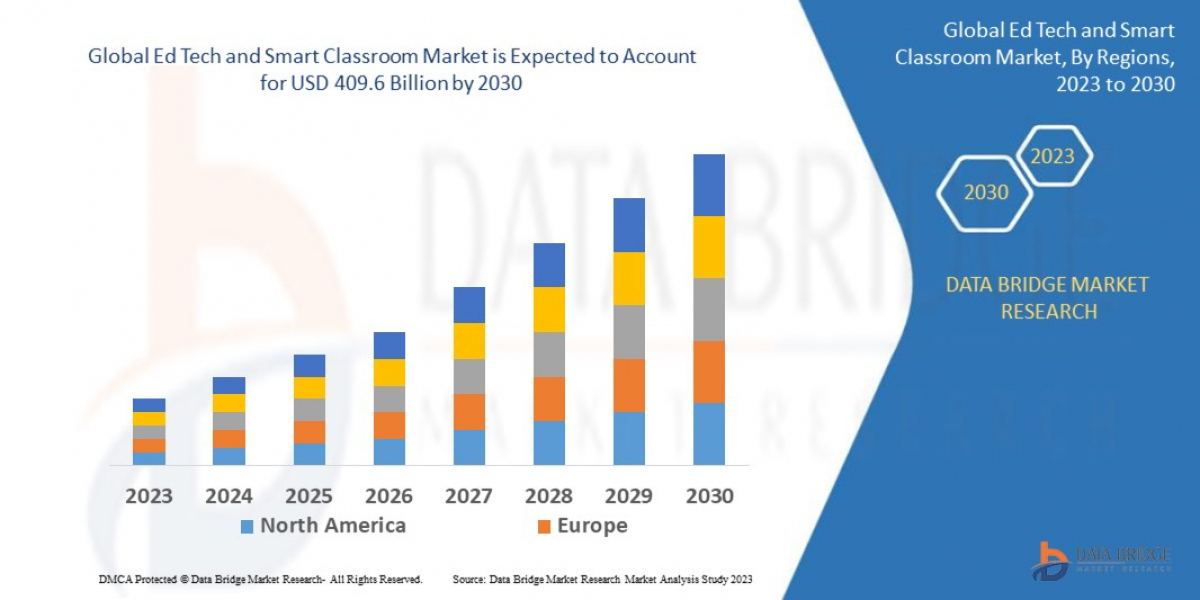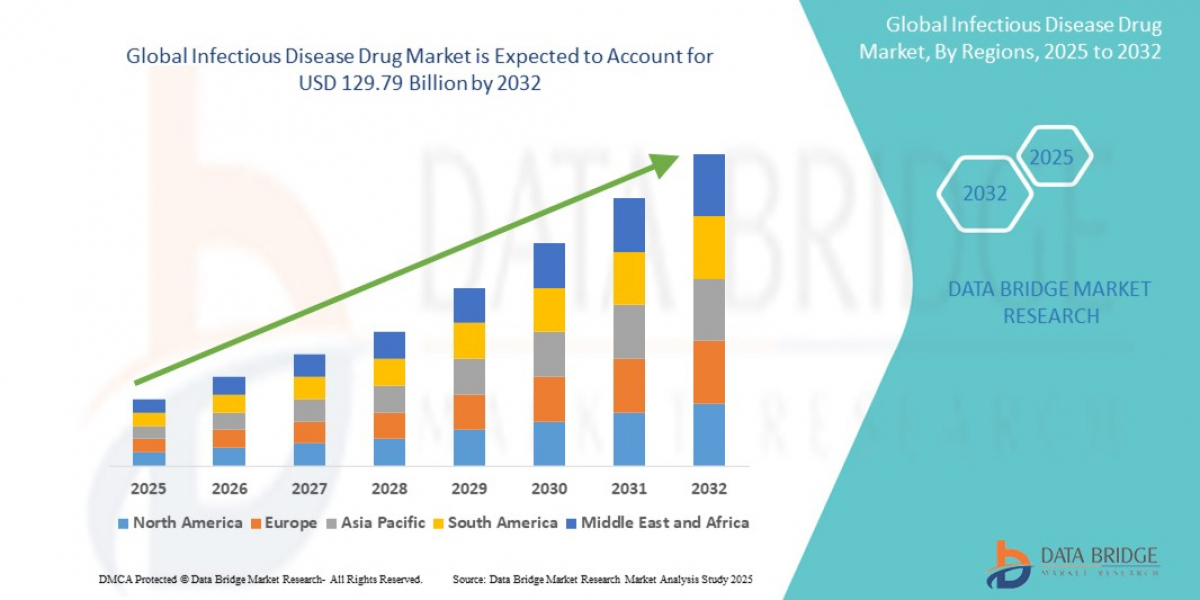I. EdTech and the Smart Classroom Defined
- EdTech (Educational Technology) is a comprehensive ecosystem of digital tools, including software, hardware, and platforms, designed to enhance educational outcomes and elevate the learning experience. It spans from early childhood learning apps to corporate training modules, aiming to democratize knowledge access and foster deeper engagement.
- Smart Classroom refers to a technologically advanced learning space that replaces traditional elements with interactive whiteboards, smart projectors, AI-powered personalized learning platforms, and cloud-based systems for seamless connectivity. These environments are designed for dynamic, collaborative learning.
The global Ed tech and smart classroom market was valued at USD 118.53 billion in 2022 and is expected to reach USD 409.6 billion by 2030, registering a CAGR of 16.5% during the forecast period of 2023-2030.
II. Market Size and Growth Projections
- In 2024, the EdTech market was valued at $154.29 billion.
- Projections indicate significant growth, with the market expected to exceed $450 billion by 2033.
III. Historical Evolution of EdTech
- 1440: The printing press democratized access to knowledge.
- Early 1800s: The chalkboard emerged as a tool for visual instruction and collaboration.
- 20th Century:
- Early educational films and visual media enhanced learning.
- Radio extended educational reach to remote areas.
- Television provided instructional programs.
- Language labs facilitated immersive language learning.
- Overhead projectors (introduced in the 1930s) allowed easy display of diagrams and text.
- 1970s and 80s (Digital Dawn):
- Computers were introduced into classrooms.
- Computer-Assisted Instruction (CAI) offered interactive learning.
- Personal computers streamlined administrative tasks like grading.
- Programming languages like BASIC and LOGO fostered computational thinking.
- 1990s (Internet Era):
- The internet enabled online learning.
- Learning Management Systems (LMS), such as Blackboard, facilitated virtual classrooms and asynchronous learning.
- COVID-19 Pandemic: Acted as a catalyst, accelerating global EdTech adoption and compressing years of technological progress into months.
IV. Current Trends and Technologies in EdTech
Key Drivers:
- Personalized Learning: Enabled by AI and data analytics.
- Ubiquitous Connectivity: Widespread internet access and smart devices.
- Government Initiatives: Significant funding for digital education programs.
- Integration of Advanced Technologies: AI, AR, VR, and IoT are transforming classrooms.
- Hybrid and Blended Learning Models: Combining online and in-person instruction for flexibility and engagement.
Forefront Technologies:
- AI and Machine Learning: For personalized content, real-time feedback, automated grading, and lesson planning.
- AR and VR: For immersive learning experiences (e.g., virtual dissections, solar system exploration).
- Mobile-First Learning: Catering to on-the-go learning, especially in developing economies.
- Cloud-Based Platforms: Offering scalability, accessibility, and cost-effectiveness.
- Gamification: Incorporating game-like elements to make learning more engaging.
Market Segments:
- K-12 Education: Currently the leading segment.
- Higher Education, Corporate Training, and Vocational Schools: Also adopting digital solutions.
Geographic Markets:
- North America: Remains the largest EdTech market.
- Asia-Pacific: Experiencing the fastest growth due to increasing internet penetration and government support.
https://www.databridgemarketresearch.com/reports/global-ed-tech-and-smart-classroom-market
V. Challenges and Limitations of EdTech
- Digital Divide: Unequal access to devices and reliable internet connectivity exacerbates educational disparities.
- Data Privacy and Security:
- Concerns regarding the collection, misuse, and surveillance of sensitive student data (grades, habits, psychological profiles).
- Potential for data misuse for advertising, sale to third parties, or security breaches.
- Lack of transparency in data practices by some companies.
- Teacher Training and Support: Many educators lack adequate training to effectively integrate new technologies, leading to "teacher tech trauma."
- Infrastructure Challenges: Inconsistent electricity, spotty internet, and outdated hardware hinder adoption, especially in developing regions.
- Effectiveness Concerns:
- Potential for over-reliance on technology to hinder critical thinking.
- Distractions from social media and games impacting student focus.
- Need to distinguish superficial engagement from genuine learning gains.
- Cost and Sustainability: High implementation and maintenance costs, with recent dips in venture capital funding creating sustainability challenges.
- Integration Complexity: Difficulties integrating new EdTech systems with existing infrastructure, leading to technical glitches and compatibility issues.
VI. Future Outlook for EdTech
- Projected Growth: The market is expected to surpass $500 billion by 2032.
- AI's Expanding Role:
- Intelligent Tutors: Providing affordable, 24/7 student support.
- Predictive Analytics: Early identification of struggling learners.
- Teacher Support: Automating administrative tasks for focus on higher-level thinking and human connection.
- Immersive Technologies (Metaverse):
- VR/AR/XR: Transforming learning from passive to active participation.
- By 2030: Expectation of virtual dissections, historical tours, and chemistry experiments in immersive metaverses.
- Hyper-Connected Classrooms: Faster 5G/6G networks will be crucial for bandwidth-intensive immersive experiences.
- Sophisticated Gamification: Game-based learning integrated across all educational levels.
- Data Privacy Focus: Increased emphasis on protecting student data and ensuring ethical practices.
- Continued Dominance of K-12: Driven by parental demand and curriculum integration.
- Asia-Pacific Growth: Continues to be the fastest-growing market due to mobile access and government support.
Browse More Reports:
Europe Walk-In Refrigerators and Freezers Market
Europe Session Initiation Protocol (SIP) Trunking Services Market
Middle East and Africa Predictive Maintenance Market
Europe Functional Mushroom Market
North America Functional Mushroom Market
North America Automated Liquid Handling Market
Global Hyperbaric Oxygen Therapy (HBOT) Market
Global Digital Forensics Market
Global Functional Mushroom Market
Global Electron Microscope Market
Global Track and Trace Solutions Market
Global Mass Spectrometry Market
Global Tallow Market
Global Atherosclerosis Market
Global Active, Smart and Intelligent Packaging Market
VII. Conclusion
EdTech and smart classrooms are actively reshaping education, making it more dynamic, personalized, and globally connected. Despite ongoing challenges related to equitable access and data safeguarding, the drive for innovation persists. The ultimate goal is to leverage technology to empower learners and educators, preparing them for a continuously evolving future. This is an ongoing, collaborative experiment shaping the future of learning.
Contact Us:
Data Bridge Market Research
US: +1 614 591 3140
UK: +44 845 154 9652
APAC : +653 1251 975
Email:- corporatesales@databridgemarketresearch.com














